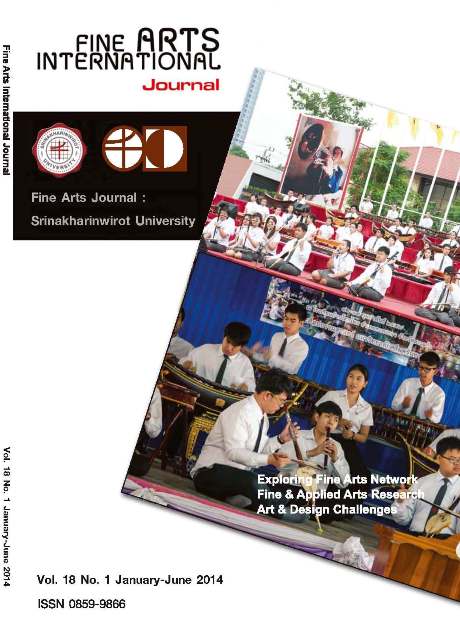Pipat Traditions in Music Culture in the Mekong River Basin: Practice and Phenomena in the Early 21st Century
Keywords:
Pipat tradition, Pinpeat tradition, Pinpat traditionAbstract
“Pipat”, or “Pinpeat” in Cambodian and “Pinpat” in Lao, is a specific word used to define a traditional ensemble from the musical culture of the three countries. The instruments in the ensemble mostly consist of melody making, punctuating instruments. Pipat music has long been used during theatrical performances, royal ceremonies and ritual functions. The compositions played are highly regarded and considered sacred
There are many common elements between the Pipat Traditions in the three countries mentioned above, for example, the instruments used in the ensemble are similar in name and physical appearance. The differences between repertoires from the different regions, while obviously recognizable by the musicians, have not been closely studied in terms of their interrelationships. Research needs to be undertaken to find out and understand more about this shared tradition. The results would serve as the agent that links their present interrelationship to their history and finally their individual origins. The purposes of this research were:
1. To clarify and explain the phenomena of the contemporary Pipat traditions in the three countries.
2. To interpret the role and status of the contemporary Pipat traditions in the society in the three countries.
3. To find out the interrelationships between the Pipat traditions in the region from the point of view of instruments, repertoires, theories, and performance practices.
Results found that the present phenomena and situation of the Pipat tradition in the three countries appears to be different. The Pipat tradition in Thailand seems to be more active than in Cambodia and Laos. From an insider’s point of view, the concerned authorities do not give adequate support or raise cultural issues to the national agenda in a practical way. Research and academic work is mostly conducted by scholars in educational institutions. The sustainable policy in cultural affairs is not clearly seen on a national level as the policies change with changes in personnel. The Pinpeat tradition in Cambodia has support from organizations and NGOs. However, the Pinpeat tradition has lost the majority of musicians and so encouraging the younger generations into Pinpeat music must be pursued. The Pinpat in Laos needs urgent revival. A vast number of Pinpat music repertoires have been lost along with instruments and musicians. Authorities need to monitor the transition from the old to the revolutionary tradition and help preserve the old tuning system.






